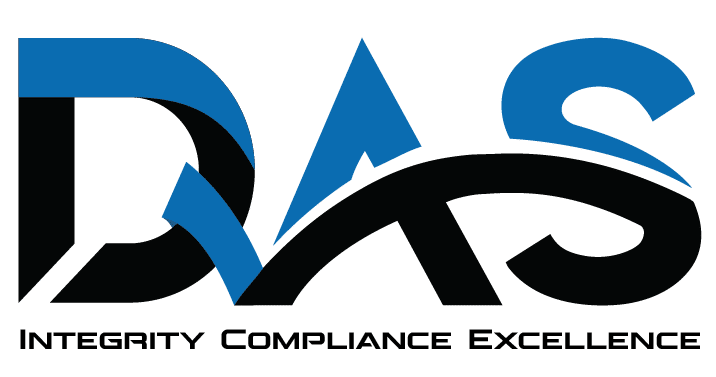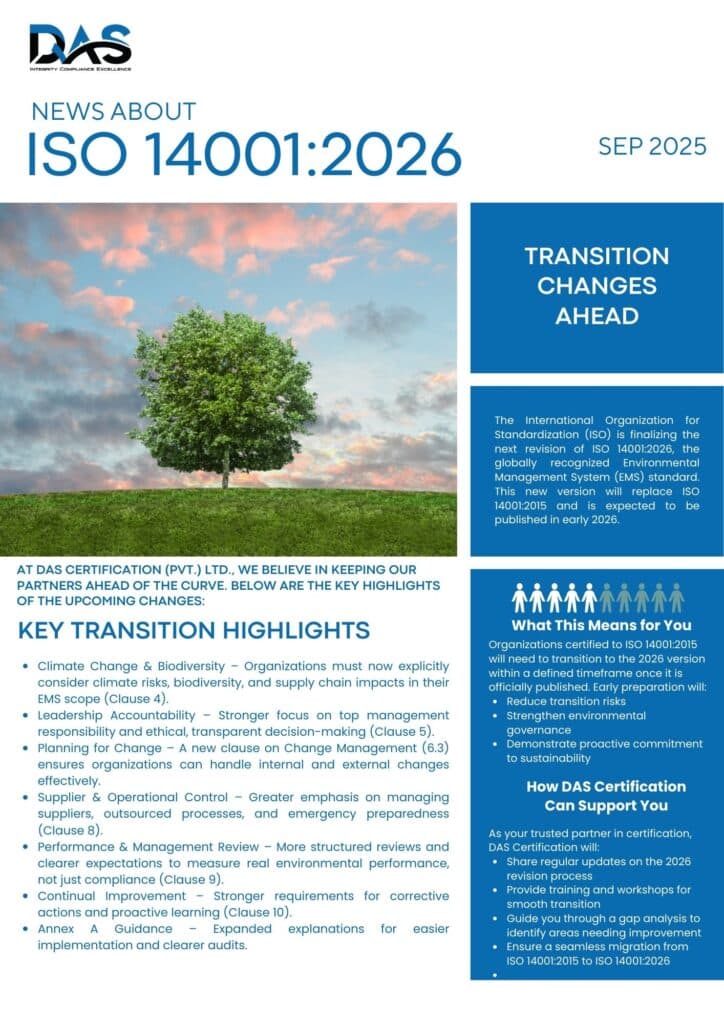This document summarizes the key changes introduced in the Draft ISO 14001:2026 Environmental Management System (EMS) standard. The revision strengthens integration of climate change, biodiversity, supply chain considerations, and leadership responsibilities. Below are the clause-wise highlights of the changes compared to ISO 14001:2015.
| Clause / Area | Key Change in 2026 | Implication |
| Clause 4: Context of the Organization | Explicit inclusion of climate change, biodiversity, and supply chain factors. | Organizations must consider broader external environmental context and resilience in EMS scope. |
| Clause 5: Leadership & Commitment | Stronger accountability of top management; focus on transparency and ethical decisions in environmental matters. | Leaders must be visibly engaged; policies should go beyond compliance and reflect sustainable values. |
| Clause 6: Planning | New Clause 6.3 on Change Management. Risks & opportunities clarified with stronger link to environmental aspects. Life-cycle perspective explicitly integrated. | Organizations must proactively plan for internal/external changes, manage climate & biodiversity risks, and adopt full life-cycle thinking. |
| Clause 8: Operations | Expanded operational control requirements including supplier/outsourced processes. Emergency preparedness extended to cover climate-related and supply chain disruptions. | Organizations must ensure stronger supplier oversight and be resilient against environmental disruptions. |
| Clause 9: Performance Evaluation | Management review restructured (inputs/outputs). Clearer requirement for environmental performance evaluation, not just compliance. Internal audits must set objectives. | EMS reviews become more rigorous; leaders need tangible performance evidence beyond compliance. |
| Clause 10: Improvement | More structured requirements around corrective actions and continual improvement. | Improvement process should demonstrate proactive learning and adaptation, not just fixing nonconformities. |
| Annex A: Guidance | Expanded interpretive notes and explanations, especially on life-cycle, risks, interested parties. | Helps organizations implement EMS more effectively and reduces audit ambiguity. |


